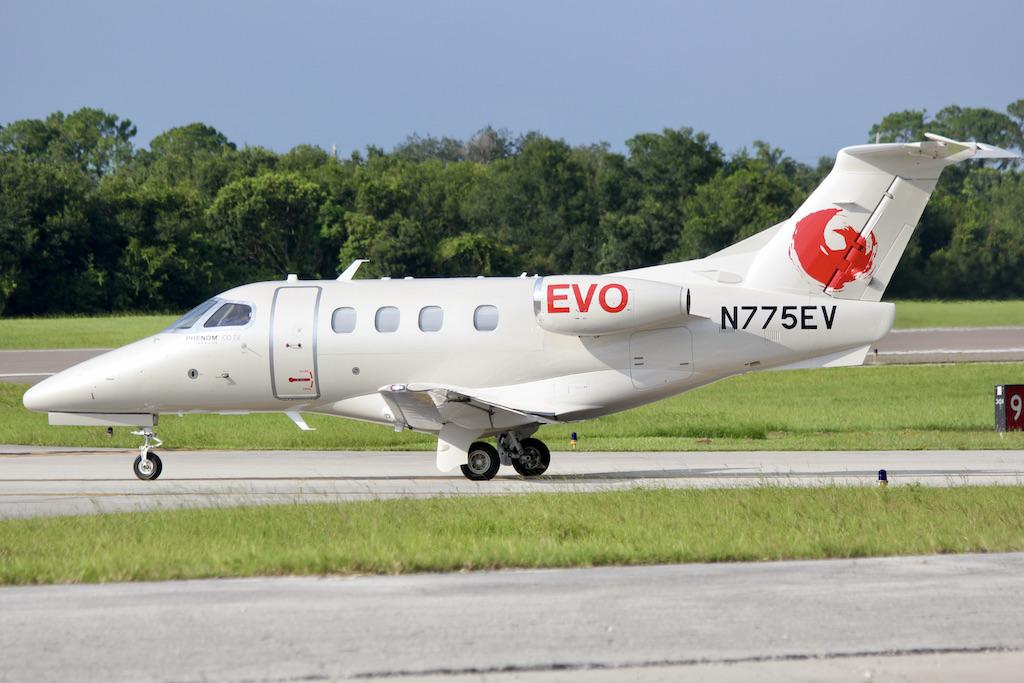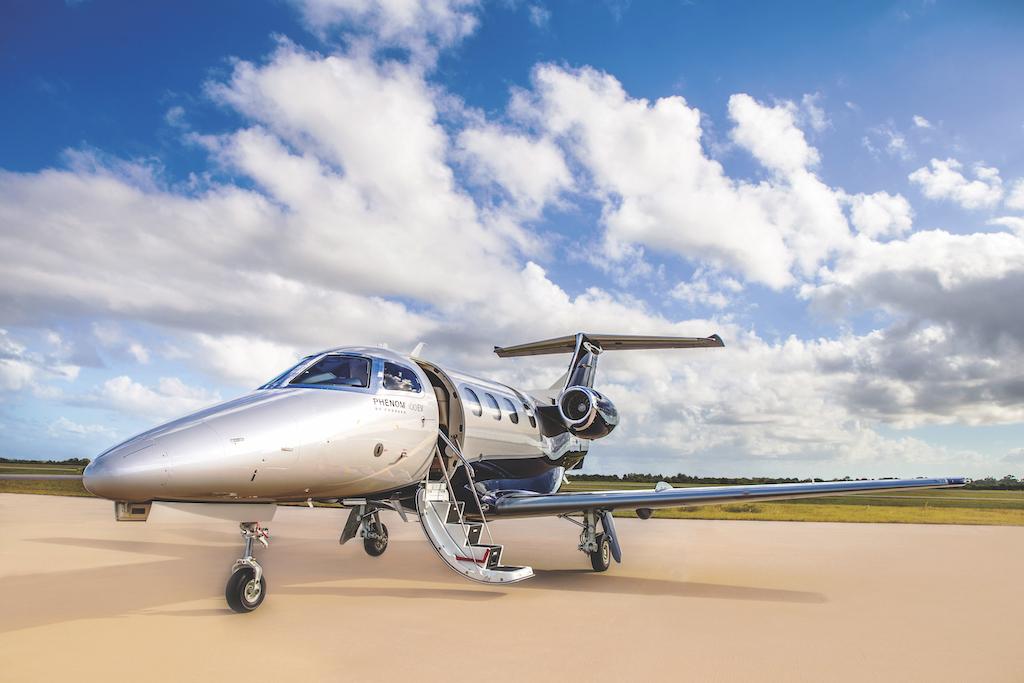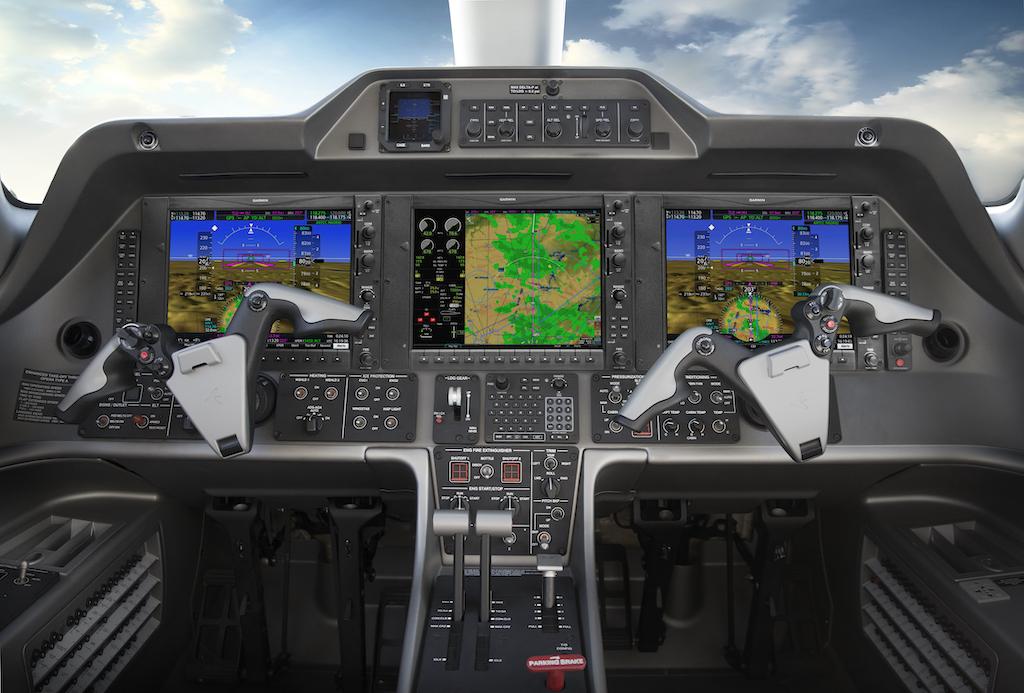
The entry-level Embraer Phenom 100 light jet has been improved over three iterations since it entered the market with a bang in late 2008.
Based on the EMB-500 type, the legacy Phenom 100 first flew on July 26, 2007, from Embraer’s Sao Jose dos Campos facility, northeast of Sao Paulo. Brazil’s ANAC civil aviation agency certified the jet on Dec. 9, 2008, with the first delivery following the same month.
“When the Phenom 100 made its debut in late 2008, it swept away the competition,” marveled former BCA chief pilot Fred George in a March 2015 pilot report. “Priced at $500,000 more than the considerably smaller and slower Citation Mustang, and $1.3 million less than the smaller CJ1+, it had a devastating effect on the sales of both aircraft. Embraer delivered 200 units in the first and second full years of production.”
The competitive landscape for light jets changed markedly, George said, with Cessna’s introduction of the Citation M2 in 2013 and Honda’s certification of the Hondajet in 2015.
Embraer rolled with the challenges. It started delivering the Phenom 100E, for “enhanced,” in 2014; the jet came with upgraded interior options and standard multifunction spoilers—inboard panels on the wing trailing edges used for reducing airspeed and increasing descent rates. Earlier Phenom 100 and 100E models were fitted with 1,695-lb.-thrust Pratt & Whitney Canada PW617F-E turbofans and a Garmin G1000-based Prodigy flight deck.
The Phenom 100EV, for “evolution,” followed in 2016. Assembled at Embraer’s manufacturing facility in Melbourne, Florida, the EV model features modified PW617F1-E turbofans and the Garmin 3000-based Prodigy Touch flight deck, featuring three 14-in.-diagonal displays and dual touchscreen controllers. The PW617F1-E engines, each delivering 1,730 lb. of thrust, offer 35 lb. more thrust per side than the PW617F-Es on the 100E.
The upgraded engines increase the jet’s top speed (406 ktas), improve its hot-and-high performance and reduce takeoff distance. The Phenom 100E flies to a max range of 1,178 nm and requires 3,400 ft. of runway to take off and 2,722 ft. to land. The EV flies to 1,194 nm with four passengers and NBAA IFR reserves and requires 3,199 ft. of pavement to take off and 2,473 ft. to land.
“We believe that pilots and operators value the design and operating performance of the Phenom 100/E equally,” says Kevin Rossignon, brokerage president with Jet Access Brokerage of Greenfield, Indiana. “It is no doubt that the Phenom 100 offers the best-in-class performance in an extremely comfortable cabin. When on the ramp, the Phenom 100 is probably one of the sexiest looking small jets out there. Its T-tail and airstairs are key features that most enjoy which are generally found on midsize aircraft.”
Rossignon adds: “In terms of performance, the Phenom 100 entry-level jet offers engine indicating and crew alerting system, FADEC engines, electronic monitoring, control of all systems through its synoptics system, fully redundant flat-panel avionics, dual-channel digital flight control, dual batteries, maintenance-friendly design, and brake-by-wire. Another beneficial feature is the trailing link on the main gear allowing for a smooth touch yet predictable landing.”
Still A Seller’s Market

As of September 2022, Embraer had delivered 388 Phenom 100-series jets, according to the Aviation Week Fleet Discovery Database. There were 291 Phenom 100s in service, with two in the possession of non-operators. There were 44 Phenom 100Es in service and 51 100EVs.
The factory-new list price of a 2008 model year Phenom 100 was $3.01 million, according to the Aircraft Bluebook. Embraer’s list price for the 100E in 2014 was $4.35 million. The list price of the 100EV in 2017 was $4.49 million and remained unchanged in 2022.
As of Sept. 6, there were 22 pre-owned Phenom 100s, two 100Es and one EV offered for sale, said Eric Hammer, executive sales director with Elliott Jets. That number represents a significant increase compared to a year ago, indicating a trend toward more availability. “I would still call it a seller’s market but not nearly as much as it was,” says Hammer. Two and a half years ago, he says, there could be 40 Phenom 100s listed for sale at any time.
“Some of the most sought-after options are a belted lav and the side-facing fifth seat—that’s always a big deal,” reports Hammer. “TCAS is not standard in the straight 100, so having TCAS is clearly important. Synthetic vision [introduced for the Prodigy system in 2010] is an important software mod.”
An average, 2009 model-year Phenom 100 in good condition and on its engine and airframe maintenance programs will sell in the $2.5 million range, says Hammer, while a new Phenom 100EV could sell in the upper $4 million range. “The average sale price that we are seeing for the Phenom 100, 100E and 100EV are $2.49 million, $3.1 million and $4.15 million, respectively,” says Rossignon.
G1000 NXi Upgrade

Garmin has developed a G1000 NXi upgrade for aircraft equipped with the original G1000 integrated avionics system, which dates to 2003. Clay Lacy Aviation, an authorized Garmin dealer, announced in July that it had completed a 10th such installation, fitting the system in a Phenom 100. Running on faster, dual-core processors, the NXi suite features brighter high-resolution displays with wireless connectivity, mapping and runway monitoring capabilities.
Embraer offers 11 custom interior finishes for the Phenom 100EV cabin, which has four-place club seating with stowable tables. The belted lav is an option from the factory or can be retrofitted for a pre-owned airplane, Hammer says.
“Most entry-level light jets are designed primarily for owner-operators; this one is just as nice for passengers,” George wrote in 2015. “The aircraft sits relatively high on its landing gear. It’s the only jet in this class, other than the out-of-production [Beechcraft] Premier 1A, to have a fold-down air stair door, giving the appearance of a much larger business aircraft. The cabin cross-section is nearly as large as of the Premier 1, giving it the roomy feel of a midsize jet.”
The Embraer Oval Lite-shaped cabin of the Phenom 100EV measures 11 ft. in length, and 5 ft., 1 in. in both width and height. The aft baggage compartment has capacity for 70 cu. ft. of personal belongings.
“The oval shape of the fuselage provides more usable head and shoulder room for seated passengers than similar-sized aircraft with round fuselages,” George said. “The cabin windows are the largest of any current production light jet, flooding the main cabin seating area with ambient light. There also are left- and right-side windows in the aft lavatory, providing bright daylight illumination that makes the compartment feel larger than its measurements.”
The Phenom 100/E has 12-, 24- and 36-month maintenance intervals. In addition to calendar-driven packages, maintenance is also due every 800 hr., which for a typical operator is every three years, says Rossignon. The landing gear overhaul is due every 10 years. Engine hot-section work is due at 1,750 hr. and overhauls at 3,500 hr.
BCA welcomes comment and insight from aircraft dealers and brokers for its monthly 20/Twenty pre-owned aircraft market feature. The focus aircraft for October 2022 is the Dassault Falcon 2000 and for November 2022 the Airbus Corporate Jet. To participate, contact [email protected].





